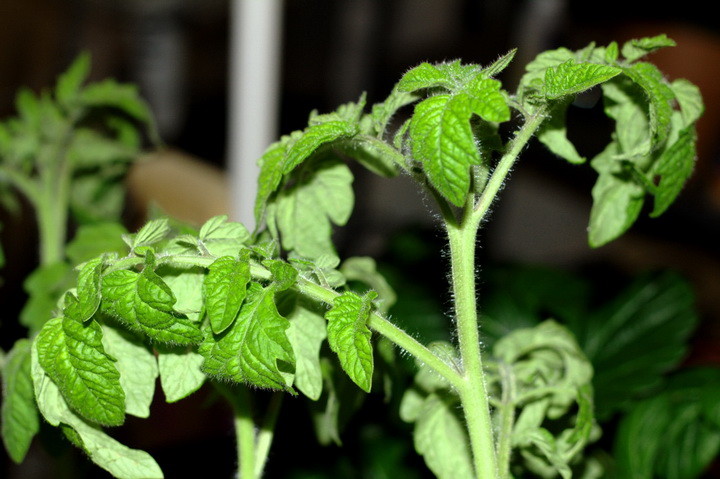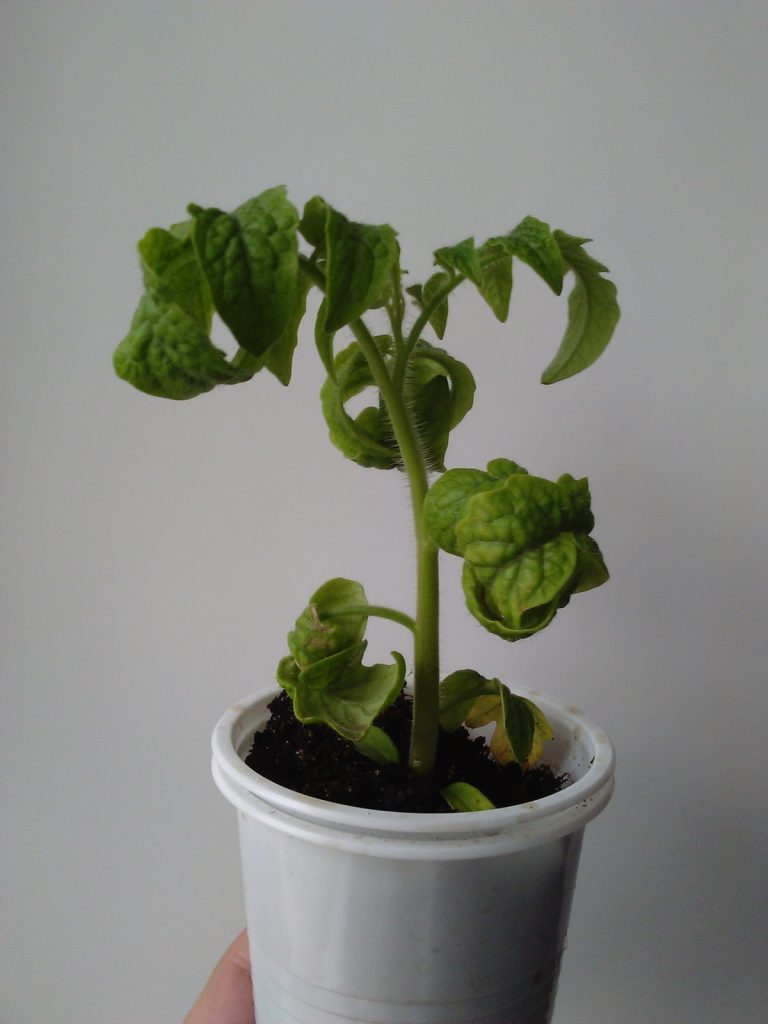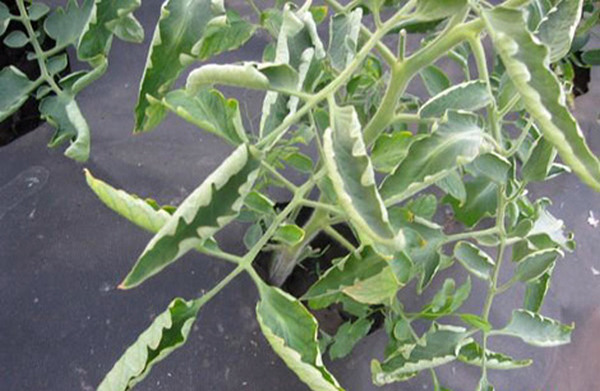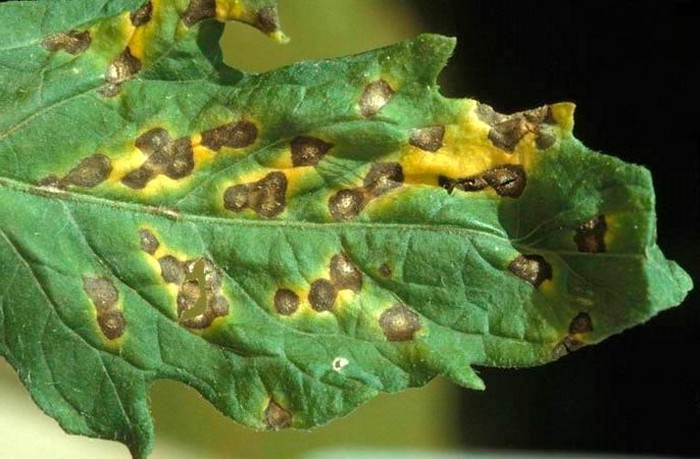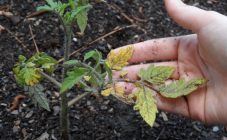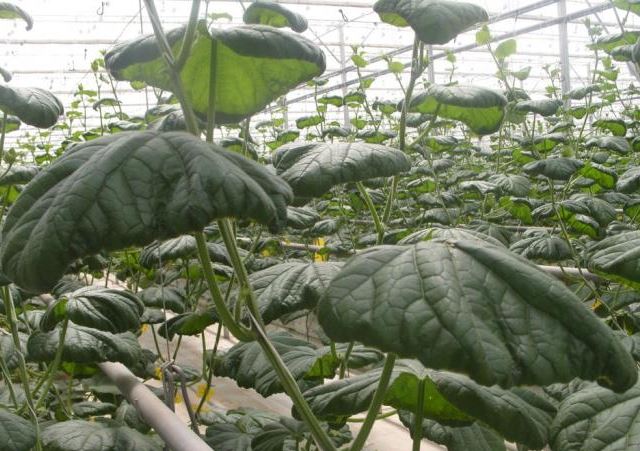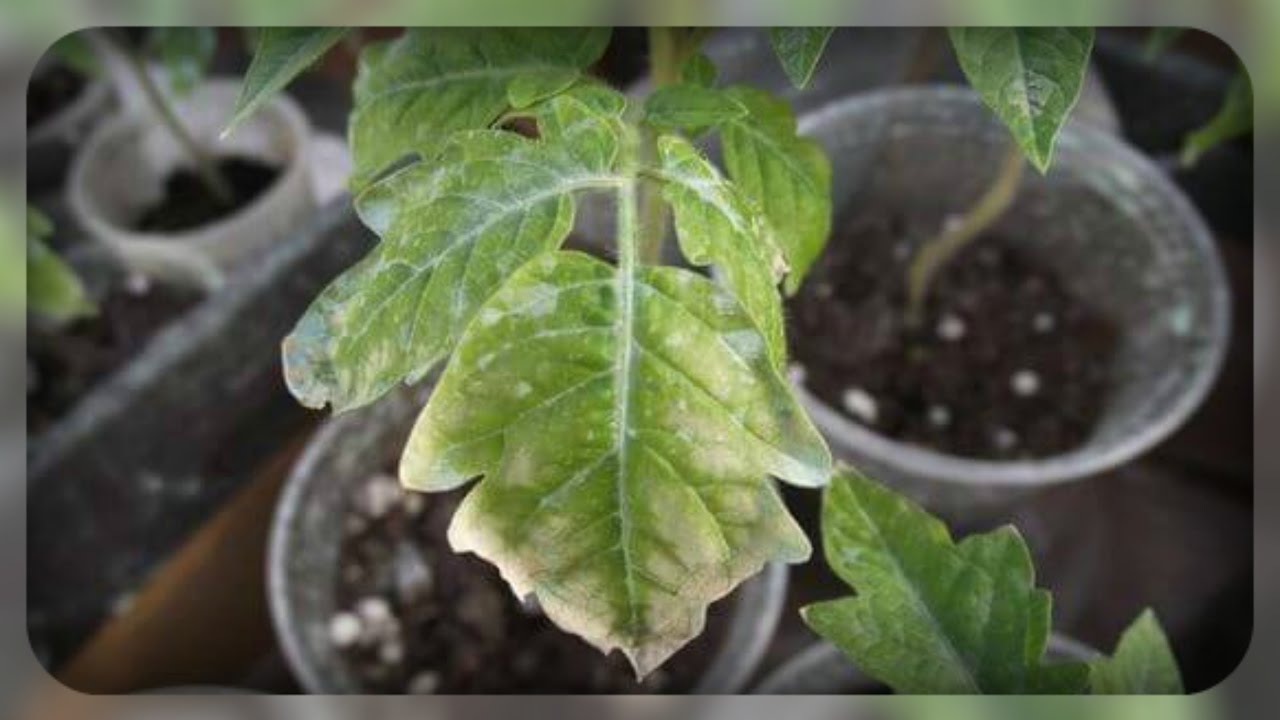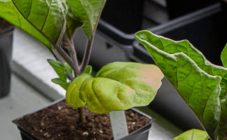Content:
Once in their homeland in Peru and Ecuador, tomatoes were considered inedible. After penetrating into Europe, they were first grown as an ornamental plant. The romantic French began to call the fruits "pomomoro" because of the scarlet color and shape that resembled a human heart. In Russian, the name was transformed into "tomato" and exists to this day. Tomatoes have long taken a firm place in the human diet. Those who have the opportunity grow them on their own. Unfortunately, this can lead to growing problems and crop diseases.
General information about tomatoes
Tomatoes belong to the Solanaceae family. The culture grows well on sandy loam soils and loams, is very thermophilic, easily tolerates dry air. The bulk of varieties ends their growth with the appearance of an inflorescence, does not need pinching and a garter. Fruits can be round, oval, pear-shaped, plum-shaped. Their color, depending on the variety, can be red, yellow, purple, orange.
Inside, the fetus is divided into 3-8 chambers. In highly ribbed tomatoes, the number of seed compartments can reach 20. Small fruits weighing 60 g, large tomatoes include varieties with fruits weighing more than 100 g. The larger the tomatoes, the shorter their shelf life. Versatile varieties are suitable for salting, pickling, fermentation, drying and other processing methods.
Tomatoes, like many other vegetables, provide undeniable benefits. They contain vitamins, sugars, organic acids and the valuable substance lycopene. This antioxidant is considered to be more effective than other carotenoids.
Why do tomatoes curl leaves
When growing tomatoes on your own, sometimes you can face a problem: the leaves begin to curl or twist. A similar phenomenon can be observed both on individual specimens and on all bushes. To eliminate the cause, it is important to understand why this is happening.
Seedlings
Since young plants are still too delicate, they need especially careful care. Seedlings usually grow in small containers, so you have to constantly monitor the volume and frequency of irrigation, the microclimate. This is why tomato leaves curl:
- The temperature is too high. Sometimes, on a sunny window, the temperature can rise to 35 ° C or more. Because of this, the leaves wither during the day and curl up like a boat, and by night they take their normal shape. You should transfer the seedlings to a window of a different orientation, or shade it.
- Insufficient watering will result in leaves begin to curl down... You need to water the plants 2 times a week, while making sure that the top layer of the soil always remains slightly damp. If the bushes "drink" the water too quickly and the leaves of the tomatoes are curling, what to do in this case? It is recommended to transplant the seedlings into larger pots.
- Nutrient imbalance. Why tomato leaves curl up in this case, an experienced gardener immediately understands. With a lack of zinc, the leaves bend down, and the tops of the shoot curl.Calcium deficiency is also manifested by leaf curl and pale color. Due to the lack of boron, young leaves bend the edges downward. With iron deficiency, the leaf plates turn yellow, and their tips are bent upward. It is necessary to deal with this by introducing the correct doses of complex preparations, for example, Kemira, Universal, Solution.
- Pest or disease attack. After a whitefly attack, the leaves will curl and the edges will begin to dry. Plants are urgently treated with Fufanon or Biotlin. Spider mite infection causes curling of delicate leaves at the very top of the head. With bacteriosis, the shoots stop growing, and the leaves curl up, dry out and wither. There is no cure for the disease. Sick specimens are destroyed.
If, before sowing, the seeds were pickled, used nutrient soil and followed the agrotechnology of growing seedlings, then such troubles should not happen to tomatoes. It happens that problems arise after planting in a greenhouse or open ground. The reason for this is often the same mistakes that were made when growing seedlings.
In adult plants
After planting in a garden or greenhouse, seedlings sometimes begin to wither, twist, dry and shed their leaves. Why do tomato leaves curl shortly after planting in the ground? There are several prerequisites for this:
- The leaves are curled into a tube. This can happen due to damage to the roots. If the “resettlement” was performed inaccurately, the roots suffered and cannot absorb moisture and nutrients normally. In the event that there is confidence that everything is in order with the soil, the plants should be left alone for 4-5 days. After a while, the bushes will return to normal. The second reason for this is the untimely removal of the stepsons. They should be removed at a length of 3 cm. The third factor is that the humidity is not adjusted. It is necessary to establish the correct watering and ventilate the greenhouse more often. Possible phosphorus deficiency, fertilization with phosphorus fertilizer is necessary.
- The leaves are twisted in a spiral. There can be only one reason for this - a lack of zinc. Feeding from 30 g of superphosphate and 50 g of ash will help. Pour the fertilizer mixture with 1 liter of heated water and leave for 2 hours. Then dilute the concentrate with water in a 10-liter bucket and use, pouring 0.5 liters of composition under each plant. This fertilizer contains the required amount of zinc.
- The edges of the leaves curl upward due to the deficiency of copper and magnesium. To eliminate it, you need to use a solution of copper sulfate and magnesium sulfate. Add a pinch of both substances to a bucket of water and stir thoroughly. Feeding is carried out on wet ground.
- The tops of tomato bushes can curl up due to excess nitrogen. This happens if the summer resident overdid it with the introduction of nitrogen fertilizers. You can return the balance to the soil by introducing potassium in the form of ash. The curl virus can also twist the tops of the shoots. There is no cure for this disease. Sick plants will have to be destroyed so that the virus does not spread to healthy bushes.
- Leaves can curl inward for several reasons. This happens with a lack of molybdenum or an excess of zinc. That is why it is necessary to apply complex fertilizer at the right time and not violate its dosage. Here, again, fertilizer will help out from a mixture of ash and superphosphate, in which the necessary elements are in the correct ratio. Another reason why tomato leaves curl inward may be a lack of moisture, especially in powerful indeterminate bushes. It is best to organize a drip irrigation system. Mulching the surface will also help keep water in the soil. Heat and lack of illumination also leads to the curling of the leaves. In hot weather, you need to ventilate the greenhouse more often and pour cold water over its walls. If there is not enough light, dust off the walls and roof of the structure.
To prevent these problems, you need to pay attention to soil preparation before planting.Seedlings must also be of high quality, so it is recommended to grow them in compliance with all the rules.
In addition, the leaves can curl into a "ram's horn", as in seedlings, due to bacteriosis and pest infestation. But in this case, there will be other signs. Insects can be seen visually.
With bacteriosis, young leaves on the top of the stem will begin to shrink, the inflorescences will become small, and the ovaries will not form at all. The cause of bacteriosis can be both infected seeds and the spread of the disease by pests (black aphids, whiteflies). To prevent their appearance, the bushes are recommended to be sprayed with infusion of wormwood, garlic, hot pepper, tobacco, yarrow. In case of mass infection, industrial insecticides are used.
The main diseases of tomatoes
According to experts, problems in growing tomatoes arise more often due to improper agricultural technology, but at the same time, various diseases can interfere with harvesting. As a result of selection, varieties appeared that are resistant to common tomato diseases, but this only reduces the risk, and does not completely eliminate the damage to the crop.
The main diseases of tomatoes include:
- Late blight - a fungal disease caused by late blight. Causes the appearance of blackness on the leaves, and then their fall off. Later, the fruits are affected. It occurs with excessive humidity and temperature drops when dew drops appear. For prevention, drugs are used: Fitosporin, Barrier, Barrier. Spraying the bushes with whey once a week prevents fungal spores from multiplying.
- Alternaria (brown spot) is also caused by a fungus. More often infecting leaves and stems than fruits. The disease begins in the lower leaves. Large brown spots with pronounced zoning appear on them. Then the stem is affected, which leads to its death. The spores of the fungus are easily carried by the wind and washed away by rainwater, which contributes to the spread of Alternaria. At the first sign, it is necessary to treat the plants with Ridomil Gold or Skor. If the fruits have already formed, it is better to use biological products.
- Mosaic... The disease is caused by a virus and cannot be treated. As a preventive measure, pre-sowing seed dressing helps. The disease manifests itself by the appearance of a mosaic pattern on the leaves, with alternating dark and light areas. Most often occurs in tomatoes in the open field. Sick plants are destroyed.
- Septoriasis (white spot of leaves). A fungal disease that causes premature drying and leaf fall. Symptoms initially appear on the lower foliage as small whitish patches with darker edges. A little later, a black dot appears in the center of each spot. From the leaves, the disease passes to the stems, and the leaves themselves turn brown and fall off. High humidity contributes to the disease. They treat it with copper oxychloride, Horus and Tsineb drugs. The affected leaves are removed completely.
- Gray rot... It manifests itself as brownish weeping spots on all parts of the plant, followed by an ash-colored bloom containing spores of the fungus on the affected areas. More often spots appear near wounds, for example, after pinching. The disease flares up towards the end of summer, in rainy and cool weather. For the prevention of gray rot, spraying with an infusion of garlic is used.
- Root rot... Often occurs when there is an excess of fresh organic matter in the soil (unripe manure). Waterlogging of the soil also contributes to its appearance. The best way to remedy the situation is to completely replace the soil.
Sometimes, due to improper care, phytotoxicity of the soil can occur, when, with the inept application of pesticides and fertilizers, the soil begins to oppress the crop instead of nourishing and growing it.In this case, the leaves will begin to become stained with a purple tint, and then they will dry out.
From all of the above, it can be concluded that the key to the successful cultivation of tomatoes is strict adherence to agricultural technology. Only with proper care can you get a high-quality harvest from this crop, without thinking about why the leaves of tomatoes curl.
